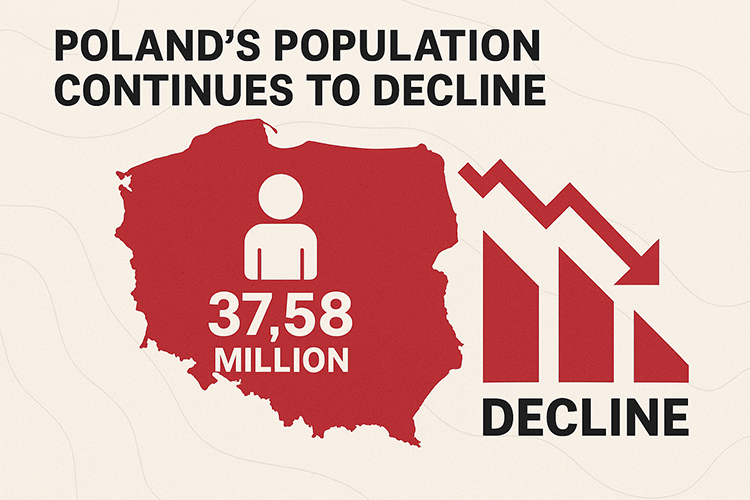Poland’s population continues to decline: Latest figures as of 1 January 2025
The Central Statistical Office (GUS) has released updated data outlining Poland’s demographic profile as of 1 January 2025. The country’s population has declined to 37.58 million, continuing a downward trend observed in recent years. Meanwhile, the total area of Poland remains unchanged at 312,696 square kilometres.
The population is unevenly distributed across regions. Mazowieckie remains the most populous province, with 5.48 million residents, followed by Śląskie with 4.28 million. On the other end of the spectrum, Opolskie and Lubuskie recorded the smallest populations, with 947,000 and 982,000 inhabitants respectively. Population density was highest in Śląskie (360 persons per km²), Małopolskie (227), and Mazowieckie (151), while Warmińsko-Mazurskie recorded the lowest density at 58 persons per km².
Among counties, the largest urban populations were reported in Warsaw (1.794 million), Kraków (804,000), and Łódź (642,000). The least populated counties included Bieszczady (20,500) and Sejny (21,100).
In terms of administrative structure, more than half of Poland’s population resides in urban and urban-rural municipalities, while about 40% live in rural areas. Warsaw, Kraków, and Wrocław are the country’s most populated municipalities. The smallest are Krynica Morska and Jaśliska.
The report highlights ongoing demographic shifts, including depopulation trends in several regions. These changes are likely to influence regional development strategies, spatial planning policies, and future allocations of public resources.









